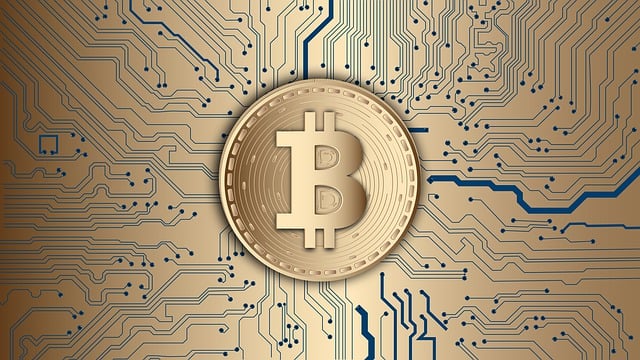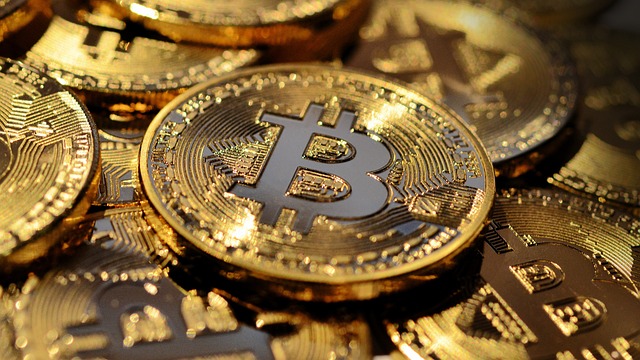Bitcoin, introduced in 2009 as the first decentralized digital currency by Satoshi Nakamoto, revolutionized money with its blockchain technology and peer-to-peer system, eliminating banks as intermediaries. Its limited supply of 21 million coins and commitment to decentralization make it an attractive store of value, resistant to censorship and political interference. Bitcoin's global network, maintained by miners through complex cryptography, ensures transparency and security for transactions, setting a standard for subsequent cryptocurrencies and challenging traditional fiat currencies and Central Bank Digital Currencies (CBDCs).
“In the realm of digital currencies, Bitcoin stands as the pioneering force, offering a decentralized alternative to traditional finance since its inception. This article delves into the heart of this revolutionary concept, exploring Bitcoin’s core principles and how it operates on a peer-to-peer network. We then turn our attention to Central Bank Digital Currencies (CBDCs), state-backed digital money with global implications.
Through a comparative analysis, we uncover the nuanced differences between decentralization and state control, shedding light on their respective strengths, weaknesses, and potential impact on the future of finance, particularly in the context of Bitcoin.”
- Understanding Bitcoin: The Pioneer of Decentralized Digital Currency
- – A brief history of Bitcoin and its core principles
- – How Bitcoin operates on a decentralized network
Understanding Bitcoin: The Pioneer of Decentralized Digital Currency

Bitcoin, introduced in 2008, is a groundbreaking digital currency that sparked the concept of decentralized money. Operating on blockchain technology, Bitcoin allows peer-to-peer transactions without the need for intermediaries like banks. Its innovative nature lies in the fact that it is not controlled by any central authority, making it truly decentralized. This unique feature has attracted many enthusiasts who value financial independence and transparency.
As the pioneer of this new currency era, Bitcoin has set a precedent for subsequent digital currencies. Its vast network of users and miners ensures security and maintains the integrity of transactions. The limited supply of Bitcoins, capped at 21 million, is another distinctive aspect that has generated significant interest in the cryptocurrency market. This scarcity, combined with its decentralized nature, has made Bitcoin an intriguing alternative to traditional fiat currencies.
– A brief history of Bitcoin and its core principles

Bitcoin, introduced in 2009 by an anonymous person or group known as Satoshi Nakamoto, was the world’s first decentralized digital currency. Its core principles revolve around a peer-to-peer electronic cash system that allows users to transact directly with each other without the need for intermediaries like banks. The Bitcoin network operates on blockchain technology, a distributed ledger that ensures transparency, security, and immutability of all transactions. This innovative design has sparked a global conversation about the future of money, challenging traditional financial systems and offering a new paradigm for digital value exchange.
The success of Bitcoin lies in its commitment to decentralization, meaning it is not controlled by any single entity or government. This feature, along with its limited supply (only 21 million coins), has made it an attractive store of value, similar to gold, as investors seek protection against inflation and economic uncertainties. The underlying blockchain technology also enables secure and transparent transactions, fostering trust among users without the need for intermediaries.
– How Bitcoin operates on a decentralized network

Bitcoin operates on a groundbreaking, decentralized network that sets it apart from traditional currencies and many Central Bank Digital Currencies (CBDCs) in development. At its core, Bitcoin utilizes a technology called blockchain, which acts as a distributed ledger that records all transactions across multiple nodes worldwide. This network is maintained by a global community of users known as miners, who validate and secure transactions through complex cryptographic processes.
Unlike centralized systems where a single authority controls the currency, Bitcoin’s decentralized nature ensures no single entity or government can manipulate the network or control the supply of coins. This makes Bitcoin resistant to censorship, political interference, and arbitrary changes in monetary policy. Every participant in the network has a say in the overall decision-making process, fostering a transparent and secure environment for peer-to-peer transactions.
In the evolving digital landscape, the debate between Bitcoin, the pioneering decentralized currency, and Central Bank Digital Currencies (CBDCs) backed by governments is paramount. While Bitcoin offers a peer-to-peer system with no intermediaries, CBDCs represent a state-driven approach to digital money. This comparison highlights the fundamental differences in their operational models, security, and potential impact on global financial systems, underscoring the significance of choosing between these two contrasting forms of digital currency.





Leave a Reply